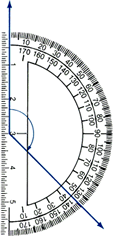ECT (Electroconvulsive therapy), also Known as
Shock Treatment or Electroshock
Brain-Disabling Treatments
in Psychiatry by Peter Breggin MD
Psychiatry's nature cannot be changed; it can only be constrained by public outrage
Dr. Peter Breggin says:
Shock treatment damages the brain through a variety of mechanisms. First, it causes grand mal seizures that are much more intense and destructive than those spontaneously experienced by people with severe epilepsy. These multiple seizures (typically 3 per week for a few weeks or more) exhaust and damage neurons or brain cells. Second, the electric current by itself damages the brain by disrupting electrical function, over-heating brain tissue, stimulating massive hypertension inside the brain, breaking down the blood brain barrier, and causing tiny blood vessels to spasm shut, depriving neurons of oxygen and nutrients. Commonly, patients undergo several seconds after ECT in which their brain flatlines--zero detectable electrical activity--a sign of permanent brain death when extended for minutes. Animal studies have shown small hemorrhages and cell death throughout the brain and in the frontal lobes after exposure to doses of ECT that are smaller than nowadays used in clinical practice. Human studies show that former ECT patients suffer from persistent loss of mental function and dementia.





